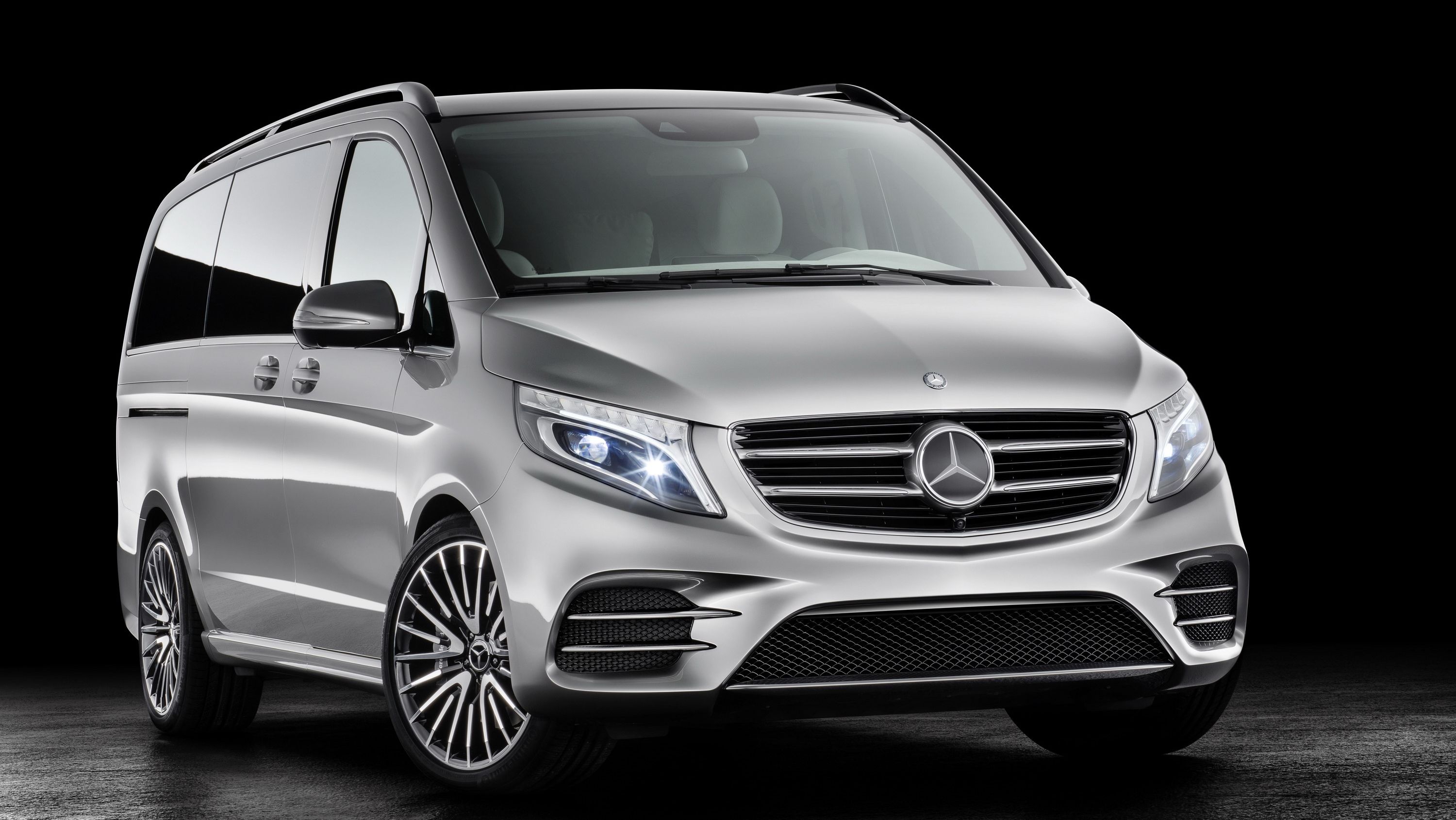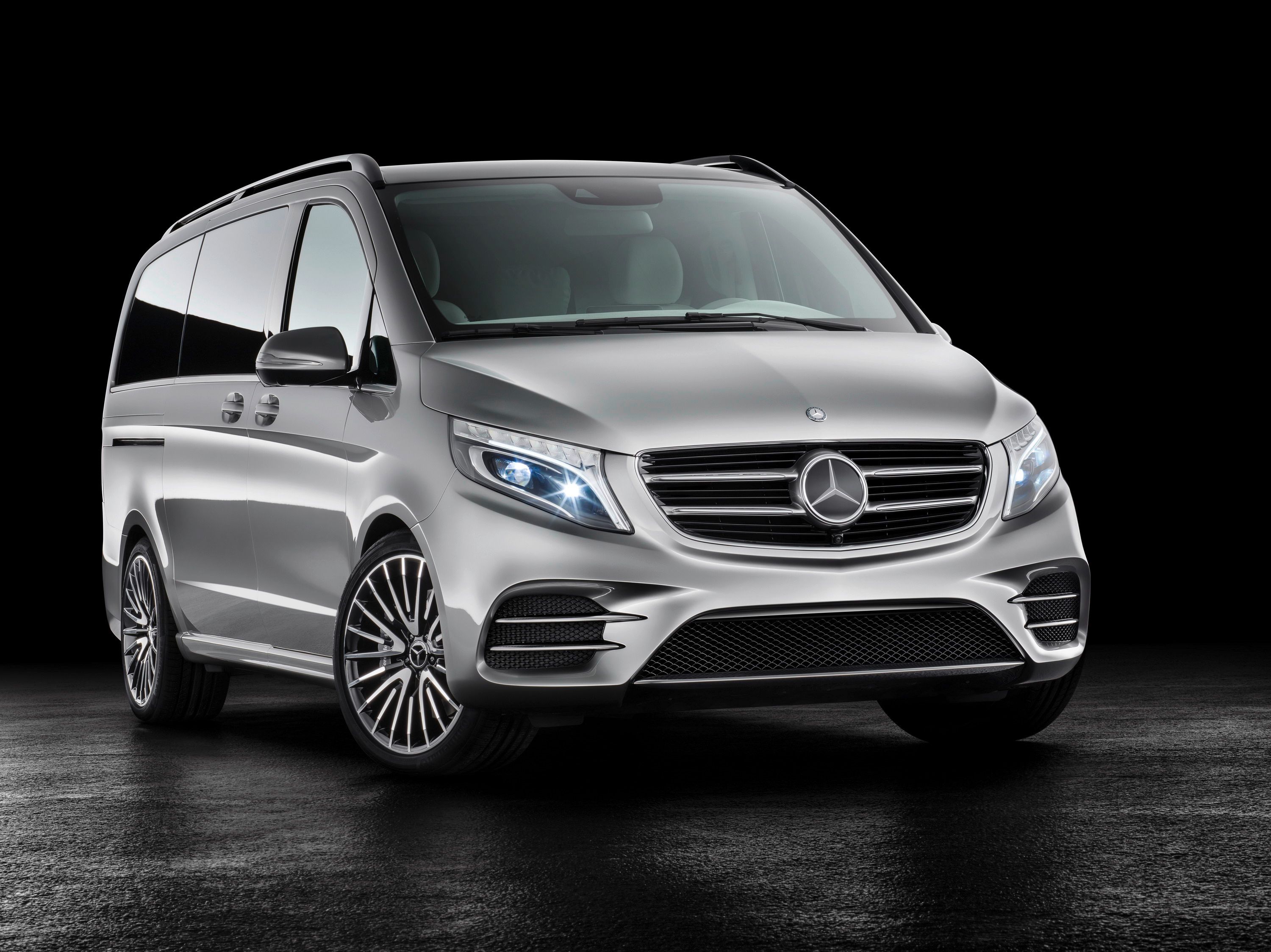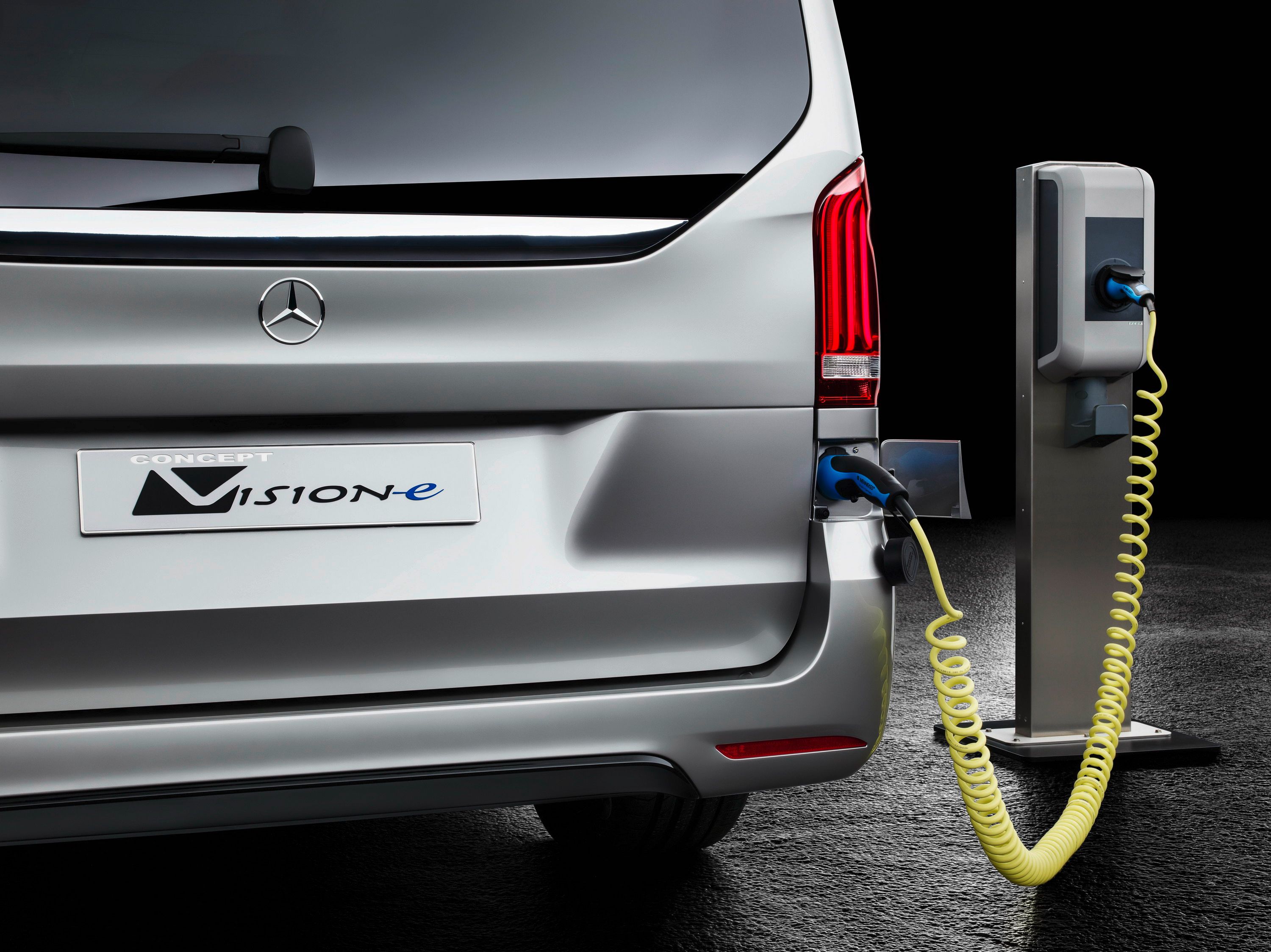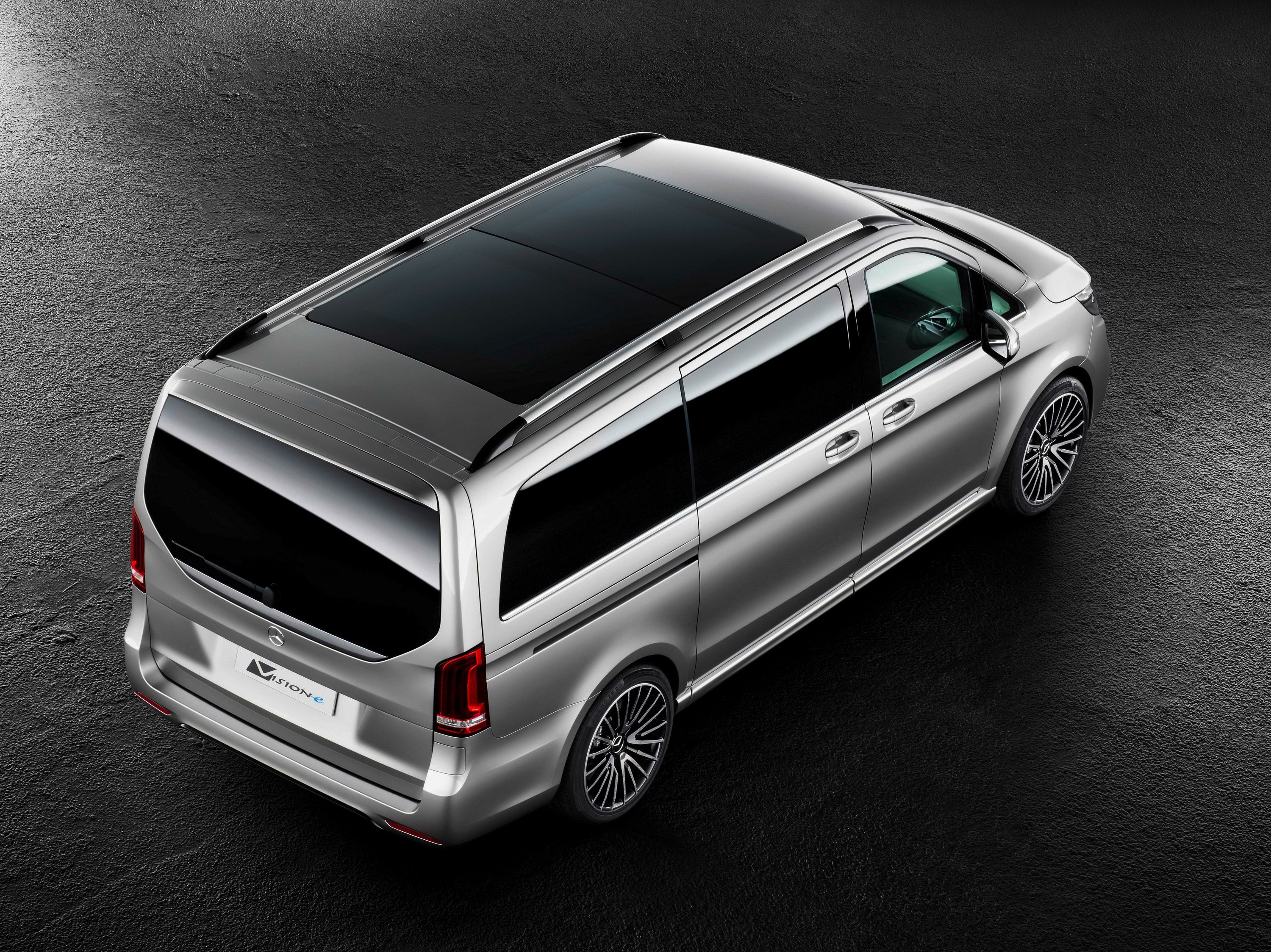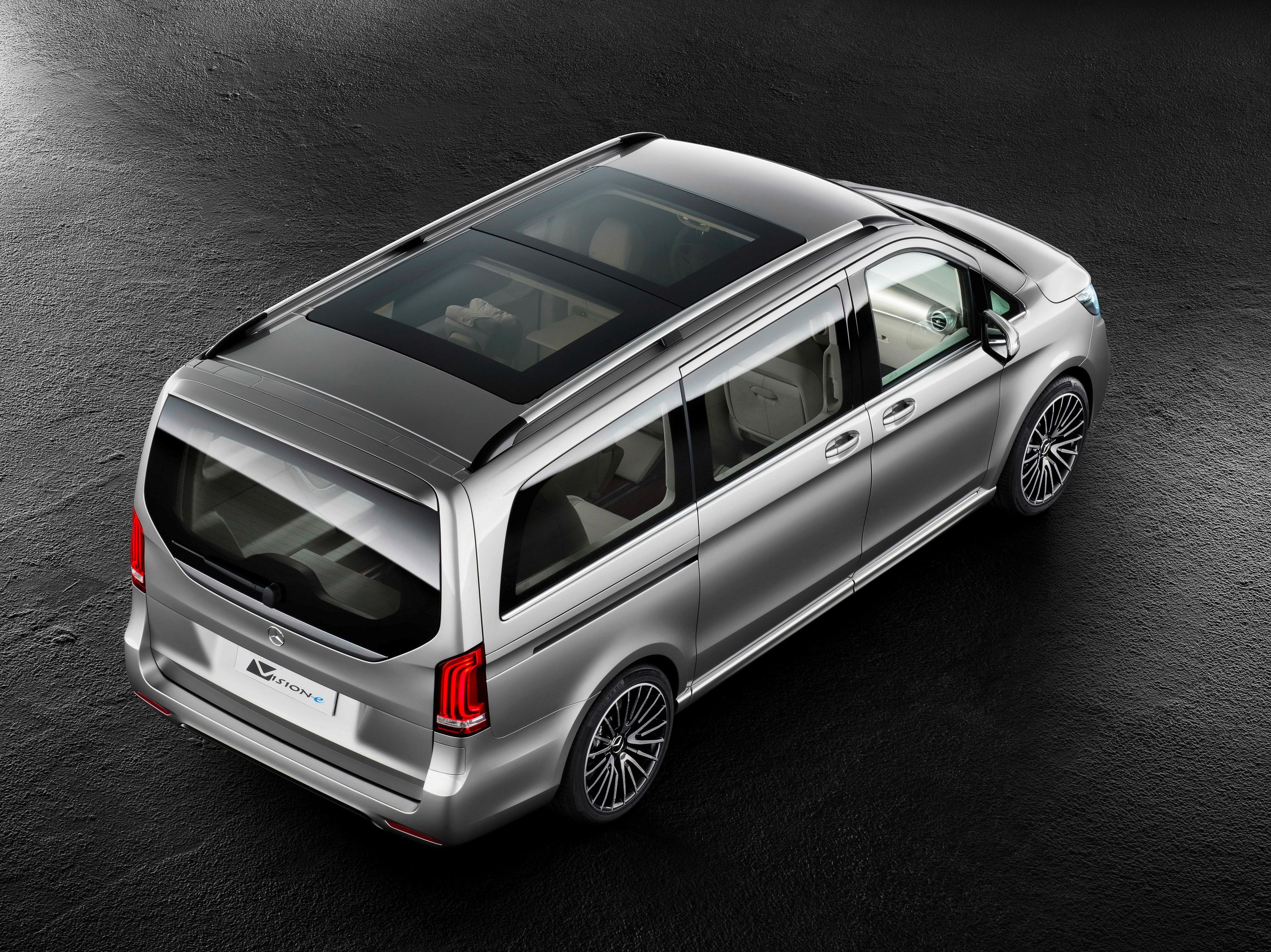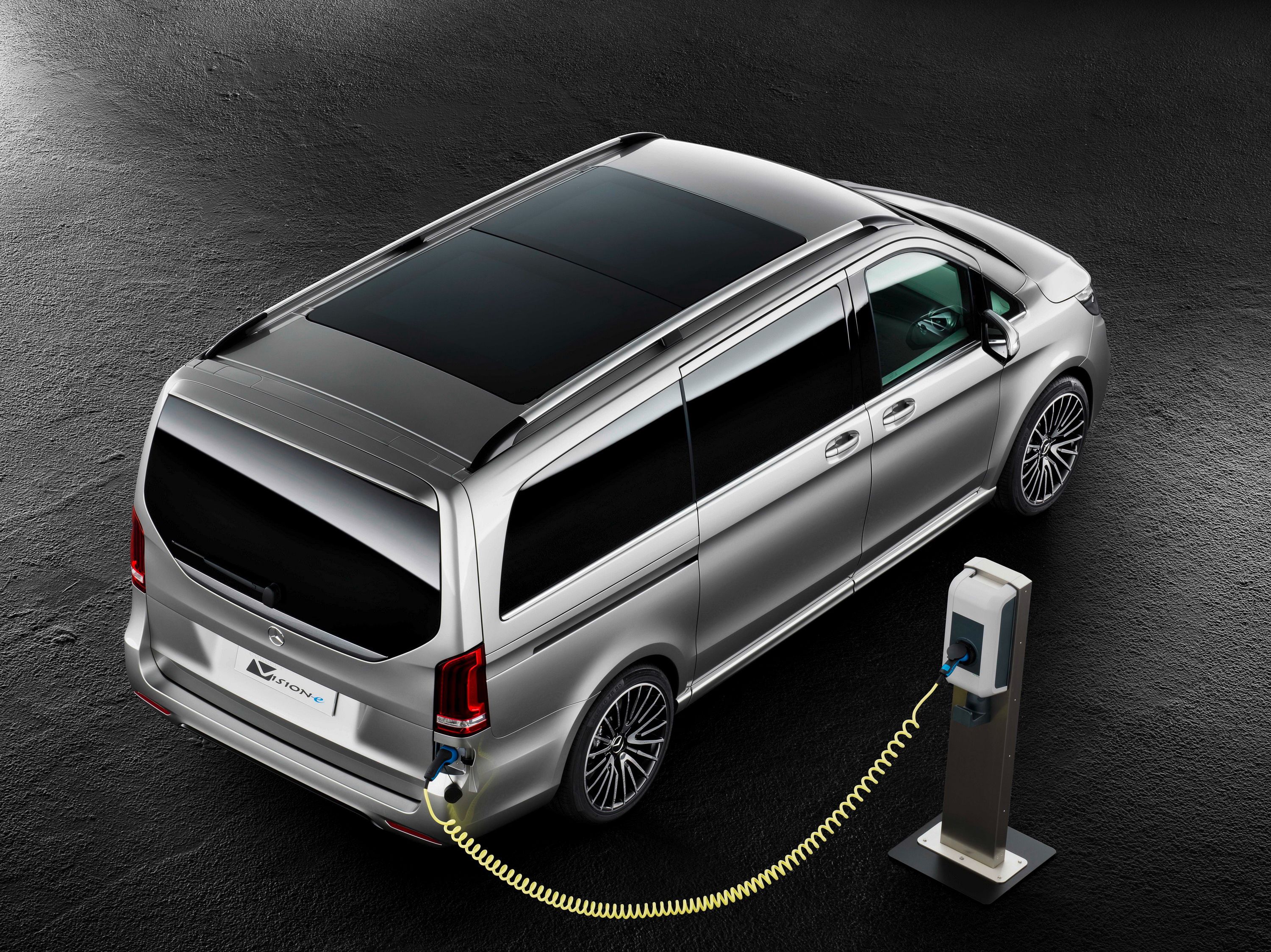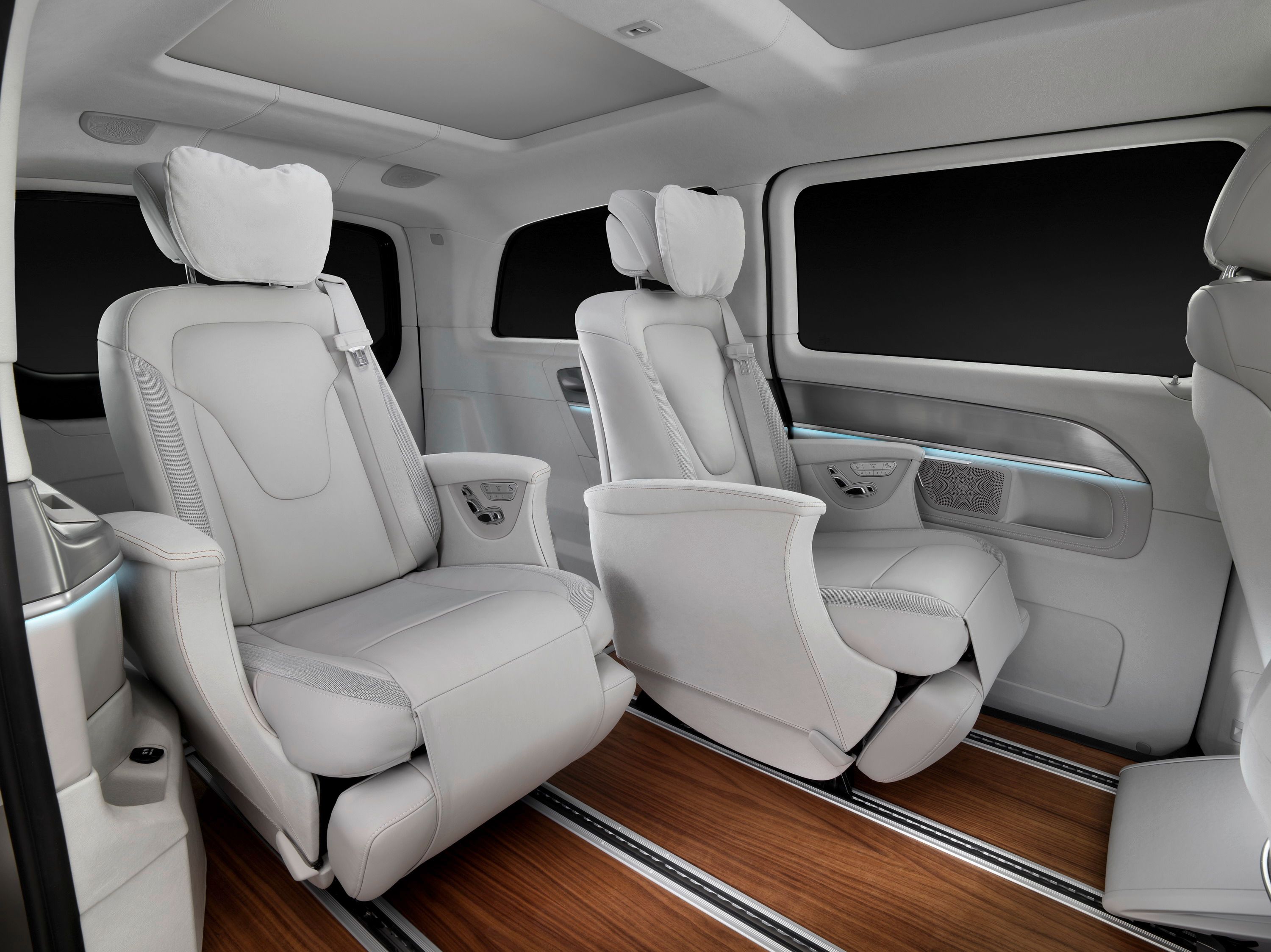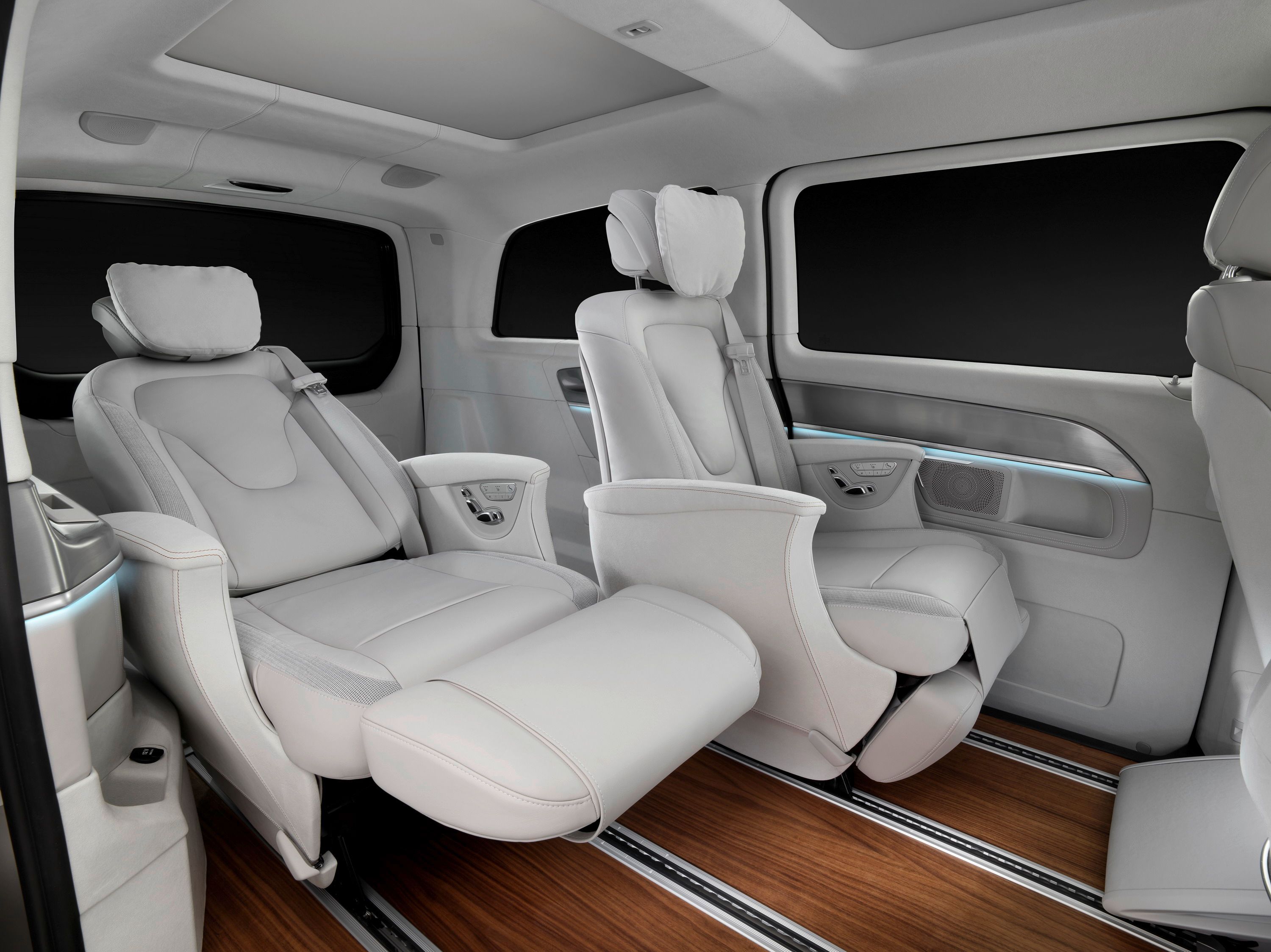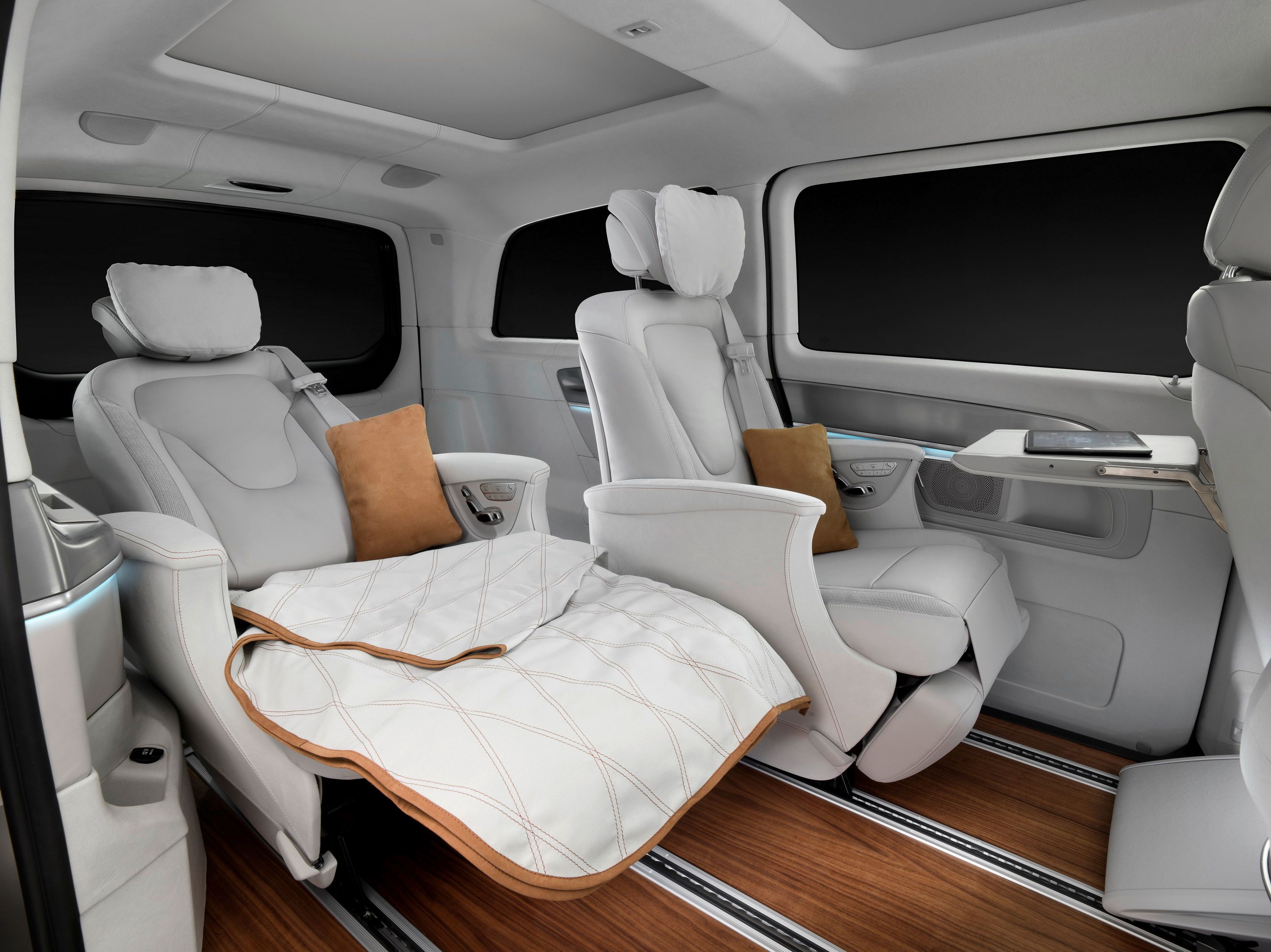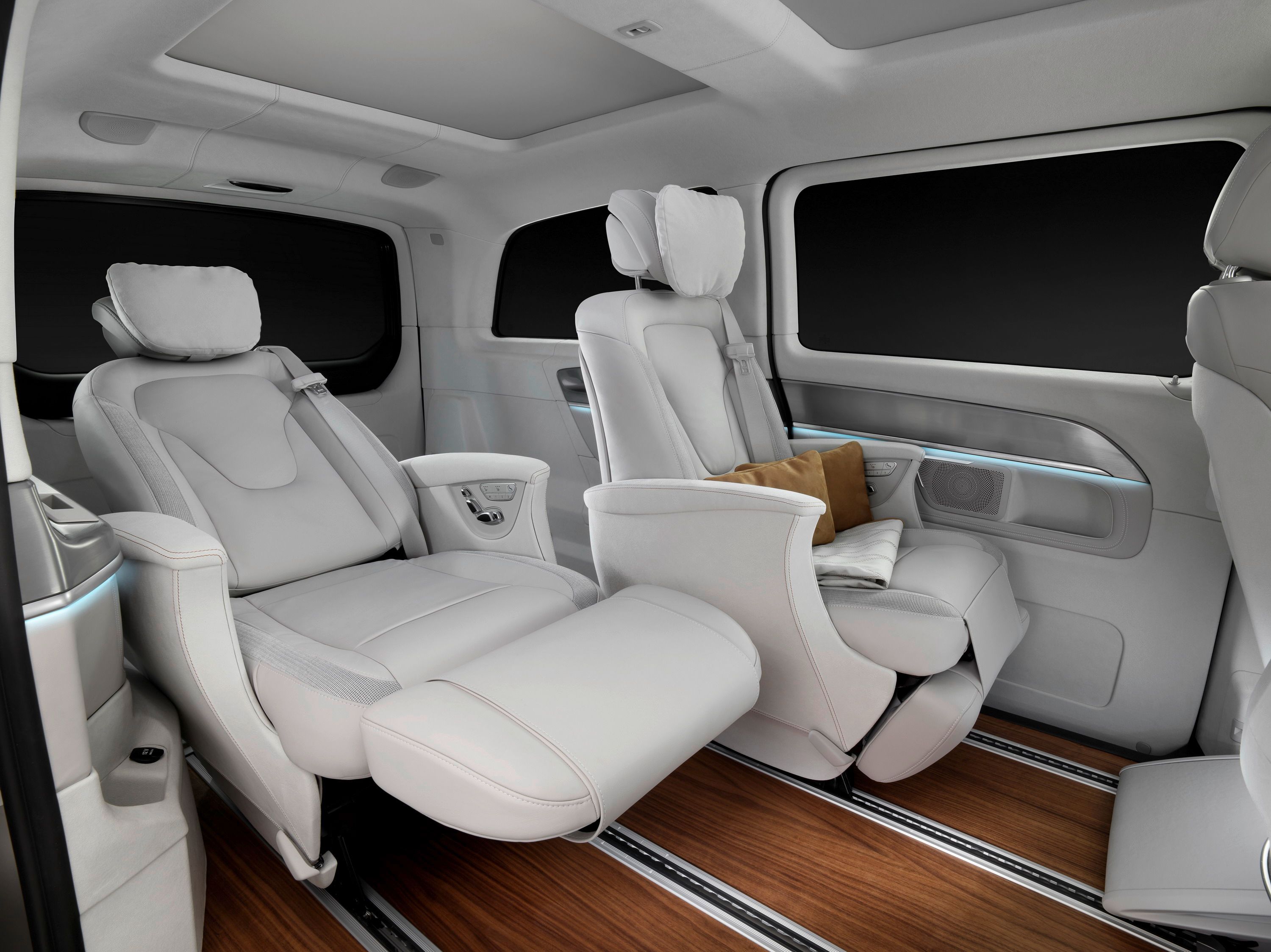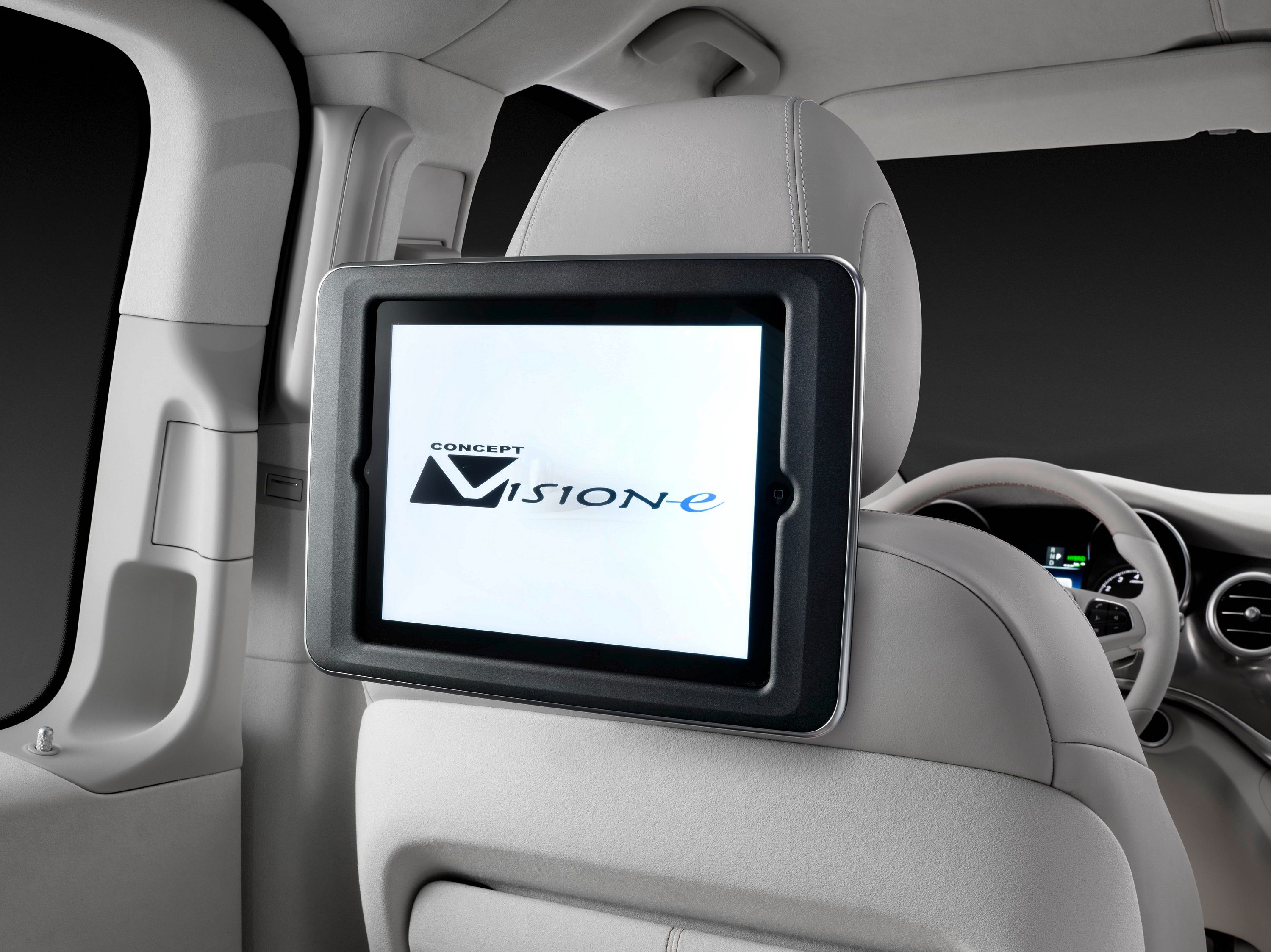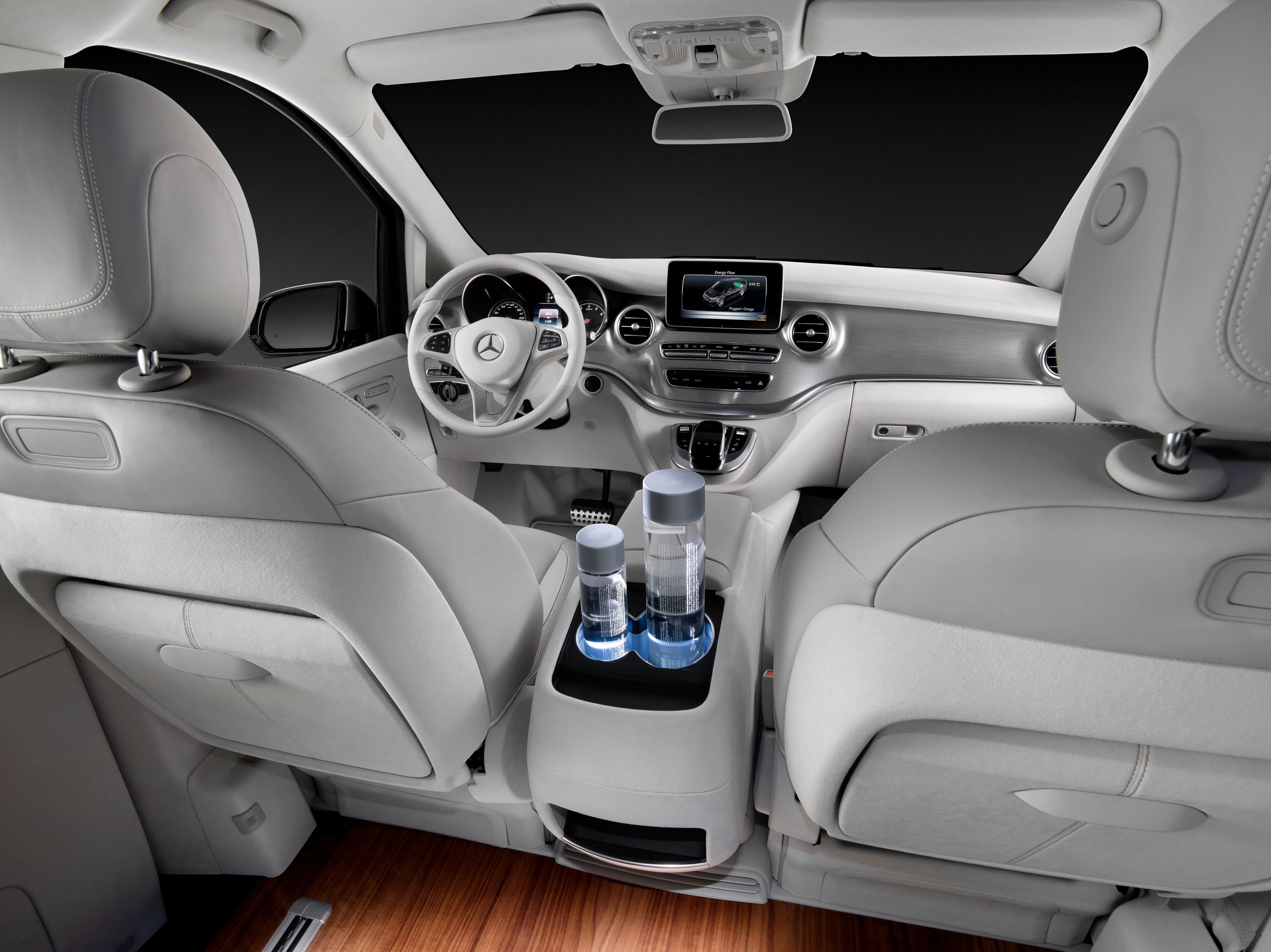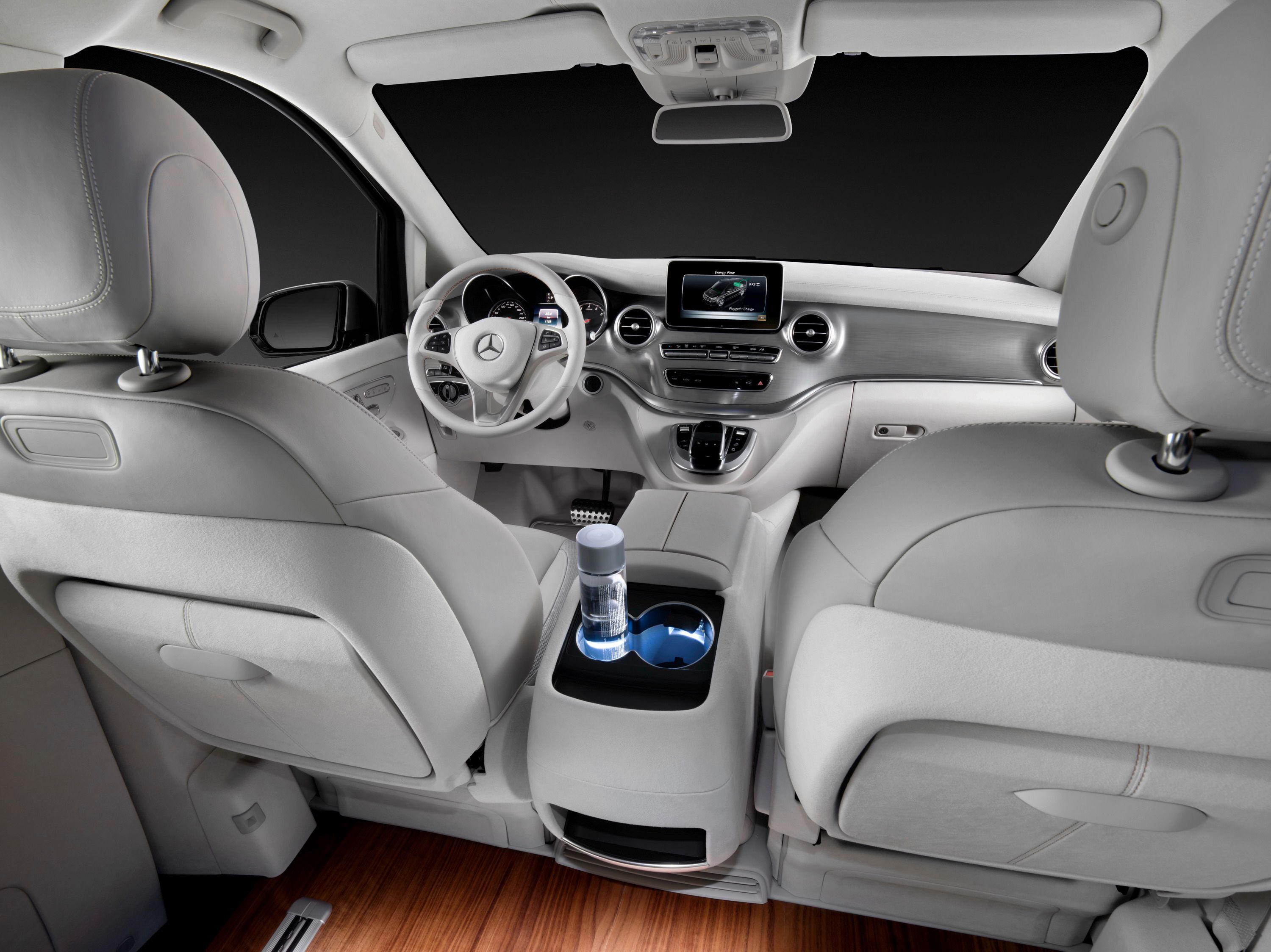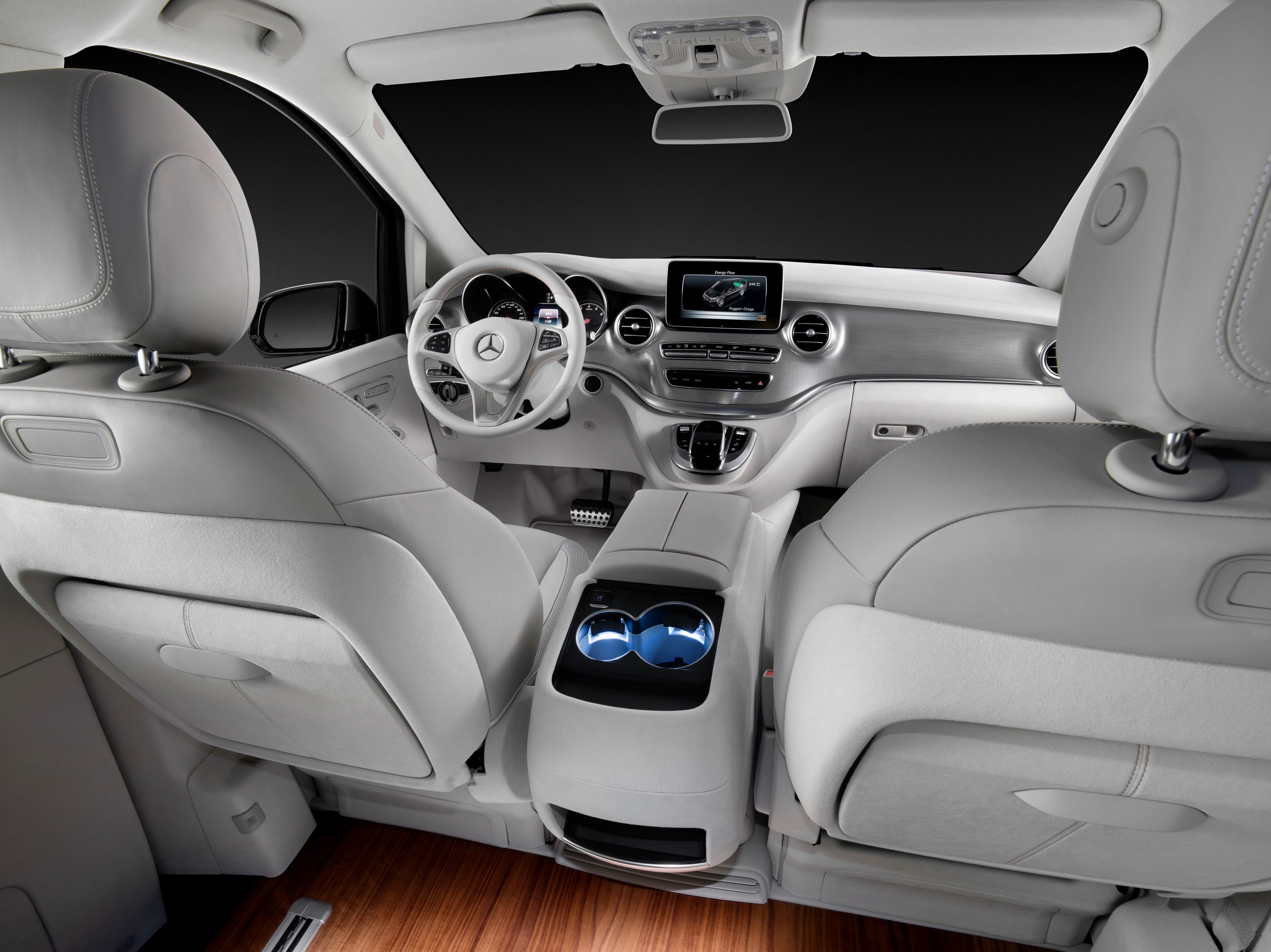Replacing both the Viano->ke2930 minivan and the ill-fated R-Class->ke369 crossover, the new Mercedes-Benz V-Class went on sale in 2014. Unlike its predecessors, the model is powered exclusively by a range of four-cylinder diesel engines, but Mercedes is expected to add other drivelines in the near future. One of those could be a gasoline plug-in hybrid, albeit Mercedes-Benz->ke187 is still studying the interest for such a model.
Based on the production V-Class, the Mercedes-Benz Concept V-ision E offers a take on a future plug-in hybrid version for the luxury MPV, blending increased performance with much-improved fuel economy. The concept is powered by an improved version of the plug-in hybrid system used on the C350e, offering the highest output of any V-Class and the option of all-electric driving.
Continue reading to learn more about the Mercedes-Benz Concept V‑ision E.
2015 Mercedes-Benz Concept V-ision E
- Make: Array
- Model: 2015 Mercedes-Benz Concept V-ision E
- Engine/Motor: inline-4
- Horsepower: 333
- Torque: 442
Exterior
Mercedes-Benz didn't go too far in differentiating the Concept V-ision E from the regular V-Class, but there a number of revamped exterior elements. The front fascia received an A-shaped bumper that is not unlike one from an AMG->ke8 model, while each side intake features two horizontal silver bars for a slightly classier look. Going over to the side, the Concept V-ision E meets the eye with sportier side skirts and 20-inch, multi-spoke wheels with a high-sheen finish.
The rear end gets a sportier bumper and a subtle spoiler on top of the hatch, while the right taillight is now accompanied by a small lid for the exterior electric charging socket. Even though the model is painted in a gorgeous designo titanium alubeam, the overall look is of a well-equipped road-going model, which in many ways it actually is.
Interior
A fully equipped production V-Class already has a business class-like interior, but the concept V-ision E takes it up a notch. Virtually the entire roof of the model is a panoramic sliding roof with Magic Sky Control, which can block the exterior light at the touch of a button, while the cabin atmosphere is that of a modern penthouse. The two power executive seats in the rear can recline 49 degrees, and have three-stage heating and ventilation and massage.
A large center console is equipped with several cup holders that can either heat or cool, a stowage compartment, USB ports, an SD card slot, a 5-liter cooler and two 220V and 12V electric sockets. Almost every touchable surface, including two tables, are engulfed in white nappa leather, while the floor is covered in wood veneer. The dashboard's design is dominated by a large slab of aluminum, while virtually every button and knob is constructed from the same material. Most of the interior features of the Concept V-ision E are available in the production V-Class as options.
Drivetrain
This is were the Mercedes-Benz Concept V-ision E truly excels compared to your average V-Class, since the model is powered by a more powerful version of the plug-in hybrid system found in the C350e. The power comes from a turbocharged, 2.0-liter four-cylinder mill with an output of 210 horsepower and 258 pound-feet of torque. Working either individually or together with the engine is an electric motor with 121 horsepower and 251 pound-feet of torque.
Oddly enough, the combined power output is 333 horsepower (instead of the expected sum of 331 horsepower) and only 443 pound-feet of torque (instead of 509 pound-feet of torque). Mercedes-Benz doesn't specify what type of gearbox transmits the power to the rear wheels, but I suspect that a version of the seven-speed automatic transmission is involved.
The electric motor gets its juice from a 13.5 kWh lithium-ion battery, which gives the concept an all-electric range of 31 miles at a maximum speed of 50 mph. The combined fuel economy is a satisfying 78.4 mpg, while the naught to 62 mph acceleration takes place in just 6.1 seconds, making the Concept V-ision E faster and more frugal than any production V-Class.
Drivetrain Specifications
|
Type |
four-cylinder gasoline engine |
|
Output |
210 HP |
|
Maximum torque |
258 LB-FT |
|
Electric output |
90 kW (121 HP) |
|
Electric torque |
250 LB-FT |
|
Combined output |
333 HP |
|
Combined torque |
443 LB-FT |
|
0–100 km/h (62 MPH) |
6.1 seconds |
Prices
With the most expensive version of the Mercedes-Benz V-Class currently starting at a little over 51,000 EUR in Germany (approximately $56,500 as of 4/3/2015), a production plug-in hybrid model shouldn't cost more than the equivalent of $60,000, despite being the new top of the range model.
Competition
Volkswagen Transporter Multivan
The Volkswagen Multivan is the only direct rival for the Mercedes-Benz V-Class, despite the fact that the Vee-Dub is older and oddly a bit more expensive than the Merc. The fifth generation of the model received a mid-cycle facelift in 2009, which brought a seven-speed, dual-clutch gearbox, improved comfort and safety features and a slightly redesigned exterior.
Unlike the V-Class, which can be either RWD or all-wheel-drive, the transverse-engined Transporter comes with either FWD or all-wheel-drive, with power coming from a range of four-cylinder diesel and gasoline engines. In a similar fashion to the V-Class, the Volkswagen van has various lengths available, and a multitude of interior configurations.
Conclusion
With the Mercedes-Benz V-Class only sporting three different versions of the same, 2.1-liter turbo-diesel engine with either one or two turbochargers, a more powerful gasoline powerplant would be a pretty nice addition to the lineup. Considering that you would also be able to drive it in all-electric mode and the combined fuel economy would be (in theory) better than the diesel versions, what would there be not to like? Mercedes-Benz has already announced that virtually its entire model lineup will be have plug-in hybrid versions, and the only major downside I see is obviously its high price. Other than that, you get the best of both worlds.

